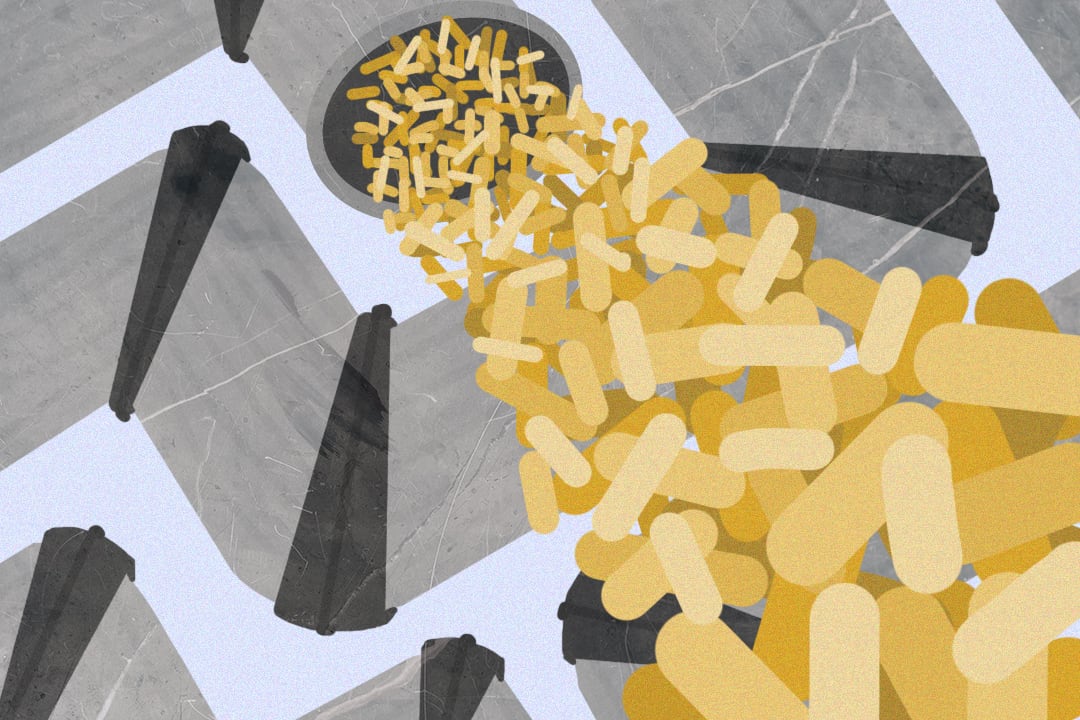Throughout the year, the water in the pipes of several U of T buildings tested positive for Legionella bacteria. According to the most recent water testing report released on May 20, testing results throughout May showed unhealthy levels of Legionella bacteria in washrooms in the Engineering Annex and University College buildings and eye wash stations in the Gage Building.
An announcement from U of T Environmental Health & Safety explained that the reason for the outbreak was water that lay stagnant from the limited use of the U of T plumbing system due to COVID-19, which allowed bacteria to grow in the pipes.
In an email to The Varsity, a U of T spokesperson wrote that no cases of people affected by Legionella have been reported to the university.
U of T began testing the water in U of T buildings for Legionella during the summer of 2020, to ensure that buildings were safe for reentry. A number of results over the course of the year show concerning levels of Legionella bacteria in numerous buildings on campus, including the Canadian Gallery, Cumberland House, and Engineering Annex.
The university has explained safety procedures for Legionella testing, explaining that if Legionella populations are shown to be at the ‘red’ level in testing results, all areas deemed unsafe are closed off until retesting shows it’s safe to reopen them.
Effects of Legionella
Not everyone exposed to Legionella bacteria will be badly affected. The specific population that is at risk of getting sick from the outbreak are individuals 50 and older, individuals with lung diseases, or people with weakened immune systems, such as those with cancer, diabetes, or kidney failure.
Alexander W. Ensminger, a U of T professor who has studied Legionella bacteria extensively, wrote in an email to The Varsity that if someone were to be exposed to Legionella, several health issues could arise. These include Legionnaires’ disease, which is a fatal form of pneumonia. The risk of sickness from Legionella bacteria is higher for higher-risk populations.
UTFA’s advocacy
While the University of Toronto Faculty Association (UTFA) is not aware of any cases of illness from Legionella, the president of UTFA wrote in an email to The Varsity that they lobbied hard for several months for the university to release test results to the public.
“I am continuously perplexed that UTFA needs to submit numerous inquiries just to get the UofT Administration to adequately respond to serious health and safety concerns,” wrote UTFA President Terezia Zoric.
In the beginning of the COVID-19 pandemic, UTFA raised concerns about Legionella bacteria growth in the water systems due to stagnant water and Ontario’s stay-at-home orders. Experts at the Dalla Lana School of Public Health had also cautioned the U of T administration about Legionella for months. On April 9, the U of T administration began sharing testing results publicly, which showed persistent populations of Legionella bacteria that Dalla Lana health experts and UTFA were worried about.
UTFA has requested the administration demonstrate proof of sufficient proper testing that, it says, should “align… with standards set by prevailing scientific bodies and [meet] the threshold of the precautionary principle.” In addition, UTFA has been waiting for the administration to promptly implement a reasonable and comprehensive plan to remove the growing Legionella bacteria. If that does not happen, the UTFA might need to escalate action to make sure they can improve health and safety on campus for the 2021–2022 academic year.
“Our program exceeds Ontario Public Health guidance for testing on buildings with reduced occupancy, and our remediation and testing methodologies are in line with the Ontario Public Health and Federal Public Works guidelines for Canadian government buildings,” wrote a U of T spokesperson in an email to The Varsity.
In response to the criticisms from the campus unions, in a separate email to The Varsity, a U of T spokesperson said that the university has taken proactive steps to ensure the campus is safe for a return to in-person activities, which is why test results are shared with the community.


